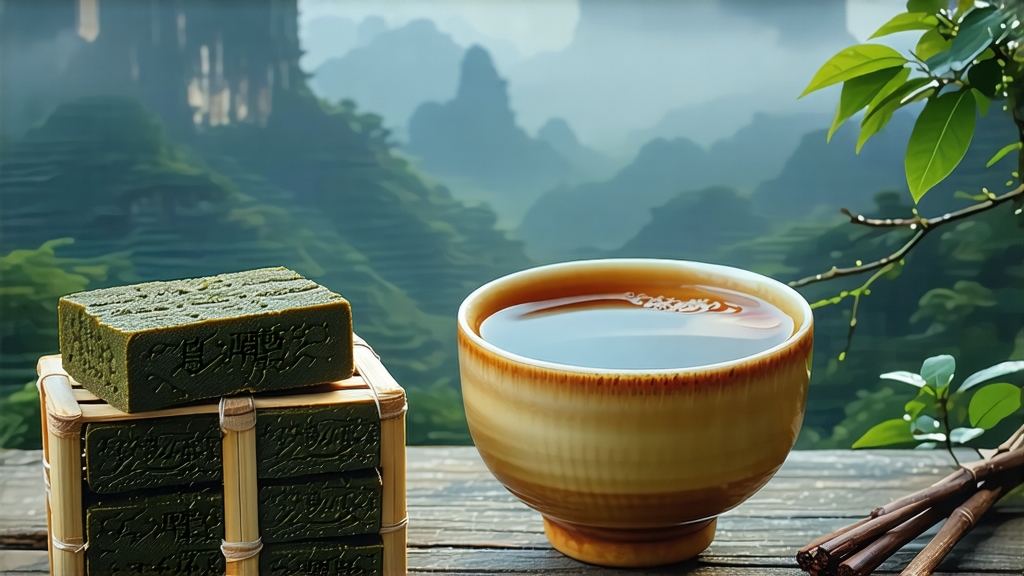
Tucked away in the humid, karst-pocked southwest of China, the small town of Liubao has been quietly exporting its secrets for more than 1,500 years. The secret is a tea so dark that light seems to fall into it, yet so gentle that even midnight insomniacs claim it soothes rather than stimulates. Outside China it is still a whisper, but inside the Middle Kingdom Liubao is the aristocrat of the heicha (dark-tea) family, the leaf that once rode the Ancient Tea Horse Road, paid imperial tributes, and still fuels dim-sum parlours from Guangzhou to Hong Kong with its signature betel-nut fragrance.
Historical footprints
Song dynasty tax records first mention “Liu Bao” tea in 1082 CE, when one liang (about 40 g) was levied for every horse traded across the Qinzhou border. By the Qing era the leaf had become a strategic commodity: the 1897 Guangxi Trade Report shows 1,100 tonnes leaving Wuzhou customs for Southeast Asia, ballasted in the belly of junks whose holds already smelled of camphor and wet wood. Overseas Chinese in Kuala Lumpur and Singapore boiled it with rock sugar to cure “ship fever” after long voyages, and tin-men swore it dissolved the grime of 12-hour shifts. Thus Liubao crossed oceans decades before the word “pu-erh” was ever printed on a London menu.
Micro-terroir: one river, two mountains, three humidity zones
The Six Bao villages—Gongping, Yaoshan, Xianyi, Sili, Dali and Gaoji—sit where the 23rd parallel north kisses the Tropic of Cancer. Daytime heat hovers at 30 °C, nighttime fog rolls off the Liu River, and annual humidity rarely dips below 80 %. The soil is lateritic, iron-rich and strewn with quartz shards that reflect heat back onto the bushes, shortening the diurnal swing and locking sugars into the leaf. Only the hardy Yunnan large-leaf sub-species (Camellia sinensis var. assamica cv. Liubao) survives here; its cell walls are 25 % thicker than those of the Fuding Da Bai cultivar, giving the finished tea a backbone that can withstand decades of aging.
From green to dark: the craft of “wet piling”
Harvest begins in late April, when three leaves and a bud still wear their spring down. After a brief 30-minute solar withering the leaves are sent to a 200 °C drum roaster for shaqing (kill-green) lasting exactly 7 minutes—short enough to preserve polyphenol oxidase, long enough to break grassiness. The twist comes next: leaves are rolled under 18 kg granite blocks for 25 minutes, rupturing 70 % of cell walls without shredding the blade. Then, instead of being dried, the leaf is piled 70 cm high inside bamboo baskets lined with wet gunny sacks. Workers spray 28 °C river water to maintain 45 % moisture and flip the pile every three days, allowing a guild of microbes—Aspergillus niger, Blastobotrys adeninivorans, and a local hero named Candida tropicalis WQ-3—to feast on leaf sugars. After 25–30 days the pile emits a sweet, almost over-ripe jackfruit aroma; the leaf has turned walnut-brown, and the caffeine has dropped by 30 %. A final low-temperature bake (60 °C for three hours) halts fermentation, and the tea is pressed into 500 g baskets woven from bamboo strips the width of a chopstick. These baskets breathe, so the tea keeps breathing.
Aging grammar: how time writes new sentences
Unlike pu-erh, which prizes mountain air, Liubao prefers the dim, riverine atmosphere of an unfired clay jar. In such jars the tea follows a three-act curve:
Years 1–3: Microbial dormancy; liquor is auburn, taste still rough, aroma reminiscent of damp bark.
Years 4–9: Slow oxidation dominated by laccase enzymes; theaflavins polymerize into thearubigins, colour shifts to deep maroon, and the first “betel-nut” note appears—part camphor, part dried longan.
Years 10–25: Basidiomycetes arrive through the bamboo weave, nibbling on residual cellulose and releasing 2-acetyl-1-pyrroline, the same